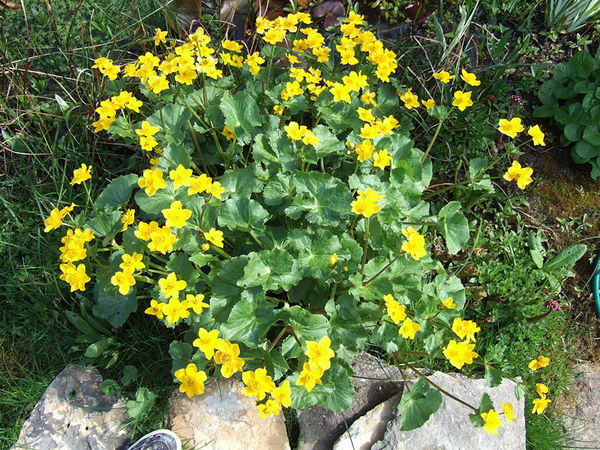
Common Name: Marsh Marigold | Scientific Name: Caltha Palustris

Family Name: Ranunculaceae
Resources
Notes from the Eclectic Physicians
Notes from the Eclectic Physicians
1884; LLOYD; DRUGS AND MEDICINES OF NORTH AMERICA
Medical History and Properties. – Caltha palustris has been used in cough syrups (Lee’s New York Medicinal Plants), but the remarks we make concerning liver leaf (page 51) will apply here. In times long passed it has been occasionally recommended, but has never received the support of a single reputable authority, to our knowledge. Salmon (1710) remarks: For any of its medical virtues, nothing has yet been observed by experience; and if Salmon failed to ascribe a medicinal use for a plant, others need scarcely attempt to honor it. Cattle and sheep refuse to eat the plant; and, according to Rafinesque, it inflames their stomachs if swallowed. Schoepf (1787) states that it is acrid, and that herds will not eat it. Caltha palustris is an excellent pot herb, and as it appears in the early spring time, it is extensively used for greens. The flower buds are sometimes pickled. This plant does not deserve a recognition in medicine.
Medical References:
1710. – The English Herbal; or, History of Plants, Salmon, p. 683.
1787. – Materia Medica Americana , Schoepf, p. 94.
1817. – Quincy ‘s Lexicon-Medicum, p. 159 (and subsequent editions).
1830. – Medical Flora and Botany of the United States , Rafinesque, Vol. II., p. 202.
1848. – Catalogue of the Medicinal Plants growing in the State of New York , Lee, p. 4.
1785. – Encyclopedia of Pure Materia Medica, Allen, Vol. II., p. 421.
1880. – Pharmocopoea Homeopathica Polyglotta, p. 104.
Disclaimer: The author makes no guarantees as to the the curative effect of any herb or tonic on this website, and no visitor should attempt to use any of the information herein provided as treatment for any illness, weakness, or disease without first consulting a physician or health care provider. Pregnant women should always consult first with a health care professional before taking any treatment.
